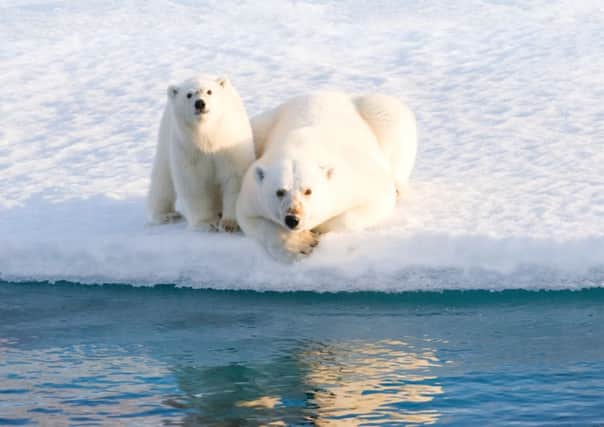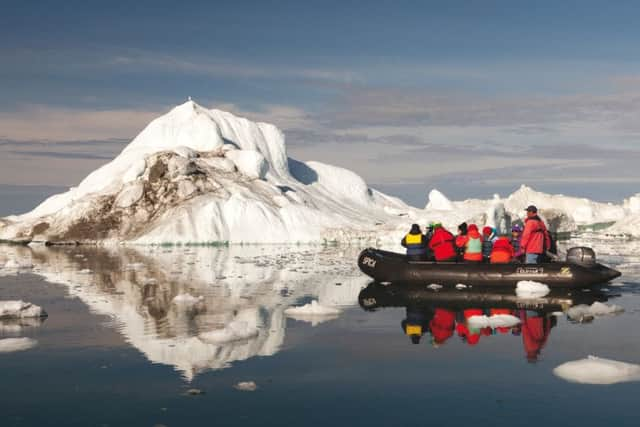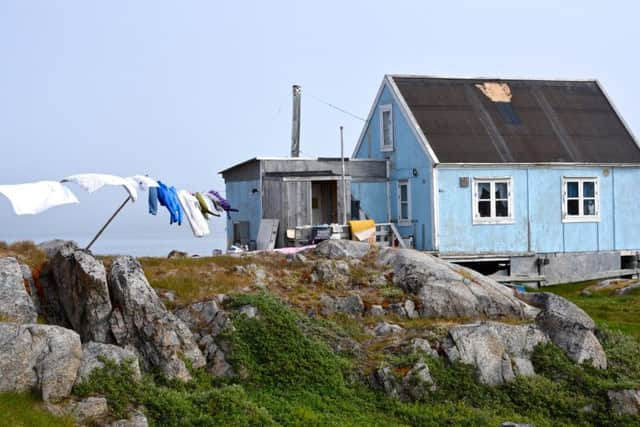Travel: A unique cruise in the Arctic


We are completely isolated. The ship’s computers tell us there are no other vessels within 150 nautical miles. Close to midnight, most passengers are tucked up in warm cabins as I wait in darkness on the ship’s bridge to sail past a gigantic, drifting tabular iceberg. Our navigator, Eli Kadariya, checks its size on the radar – 450 metres by 900 metres. We continue north along the eastern coast of Baffin Island as a never-ending sunset lingers on the horizon. It is August, and there is little darkness at this time of year. We are lucky with the ice; it moves away from us most of the time, allowing us to reach the places we want to see.
I am on a two-week expedition on the 137-metre Ocean Endeavour, an ice-class ship operated by Adventure Canada which specialises in small-group polar exploration. It carries 198 passengers and is fitted with 20 inflatable Zodiac boats that are used for exploration during expedition voyages. It is not a luxury cruise ship, yet it’s comfortable, spacious, easy to get around and the food is always good. It also has an “open bridge” policy, where passengers can join the captain and the crew 24/7 in the most interesting place on the ship.
Advertisement
Hide AdMy journey starts in Ottawa, Canada’s capital, from where I fly two-and-a-half hours north to Kuujjuaq. It is the largest Inuit village in Nunavik, 30 miles upstream from Ungava Bay, and where I board the Arctic-bound ship. We spend our first night at sea and sail north towards Akpatok Island, a protected bird sanctuary. From the ship, seven polar bears are spotted roaming the shore so we take to the Zodiacs for a closer view as they attempt to clamber up the steep limestone cliffs to snaffle birds’ eggs or catch fledglings as they fail to launch themselves, some falling into the drooling jaws of the ursine super-predators. George Sirk, our enthusiastic ornithologist, is thrilled to spot a rare Sabine’s gull for only the second time in sailing 20,000 nautical miles over the years.


Next day we land at Kangiqsujuaq, a small community where about 700 residents abide in brightly decorated prefabricated houses. Free to wander around the village or join local guides for a tour, I drop into the gym, a local meeting point where I meet Inuit elders, sample beluga whale meat and watch demonstrations of traditional games.
The following day, dodging pack ice and melting icebergs, we approach the bay of Cape Dorset, where children play on the shore, building snowcastles instead of sandcastles. Of the community’s 1,400 inhabitants, 80 per cent are Inuit, and there’s a quarry where hand-mined stone is sourced for Nunavut’s famous soapstone carvers; here their beautiful creations are sold for a fraction of the price asked by big city galleries.
The following morning we wake in sight of Kimmirut, a pretty ocean-side hamlet on the southern portion of Baffin Island and an old Hudson Bay post. The approach along the river to the picturesque village is nothing short of spectacular. Kimmirut means “the heel” in the Inuktitut language, referring to an outcrop of marble across the bay that resembles a human heel. It’s a community that doesn’t get many visitors – about 150 to the village and surrounding national park in a good year.
Continuing along the South Baffin Coast, we stop at the Lower Savage Islands, then on into thick pack ice and through a slalom of icebergs that have broken off Greenland’s glaciers and drifted south. Close to a huge iceberg, we take the Zodiacs out for a closer look while curious seals pop their heads out of the water to see what is going on.


Leaving the East Baffin coast and heading into the Davis Strait, next stop is Nuuk, the capital city of Greenland, so the next 30 hours are at sea, reading about what lies ahead, or watching for whales and birds from the deck. Nuuk, meaning “the headland”, is located at the mouth of a fjord system and has a rich history that dates back more than 4,200 years. We cruise into bays and fjords to see awe-inspiring glaciers with vast chunks of blue ice radiating cold. I’m told that Inuit elders like to make tea from the glacier ice.
Advertisement
Hide AdThe west coast of Greenland is dotted with charming fishing villages and we drop in on a small town to experience everyday local life. It must be laundry day as there are colourful clothes flapping about in the breeze outside every house.
My journey draws to an end as the ship sails towards Kangerlussuaq along the Sondre Stromfjord – a most spectacular ending to an incredible journey. Nearby, the Greenland Ice Cap cloaks the length of the island and as I fly out it is easily spotted from the plane window, its size and beauty mind-boggling.
Advertisement
Hide AdAs more people want to learn about cultures in remote places, Arctic cruising is becoming increasingly popular. The Inuit communities I visit are friendly and genuinely interested in their visitors and going there allows you to understand more about the heartbeat of those places. Arctic Canada and Greenland is unarguably remote and desolate, but it is pure and peaceful and makes you feel alive.